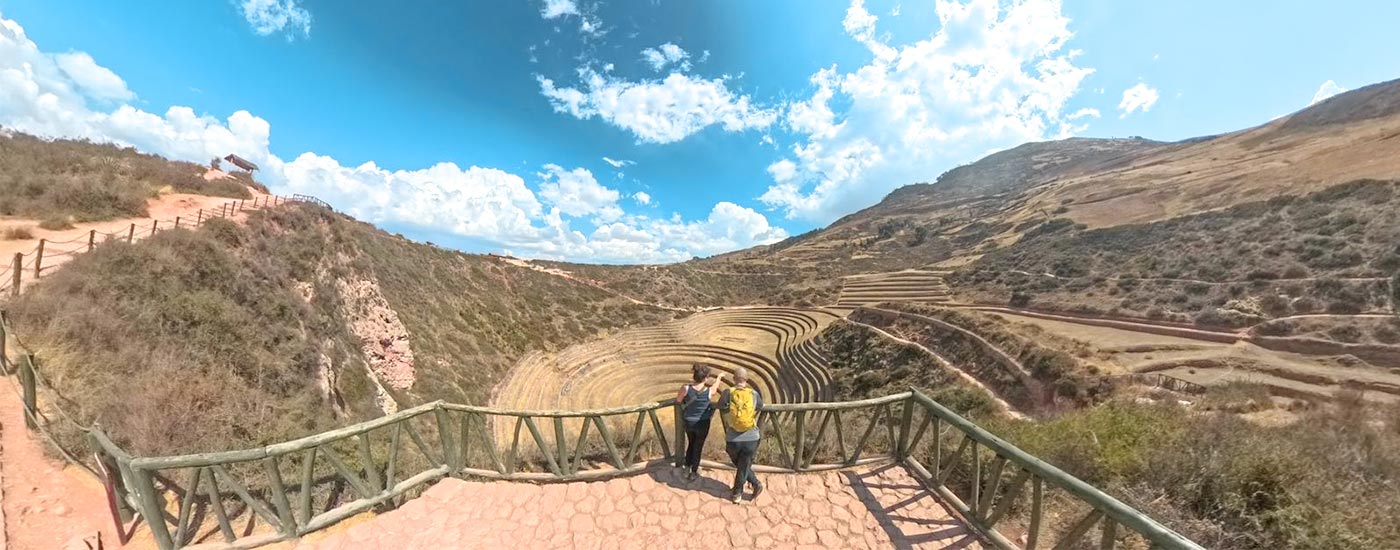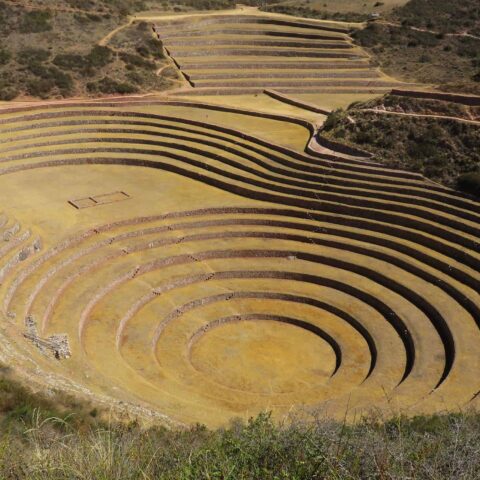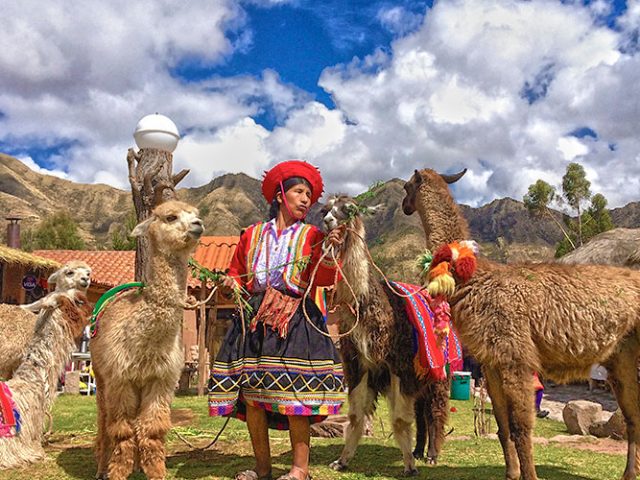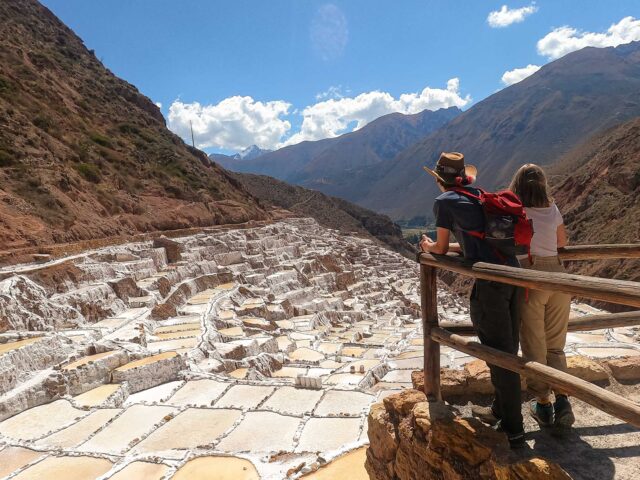Is Visiting the Moray Ruins, Peru, Worth It?
Introduction
Nestled in Peru’s Sacred Valley, the ruins of Moray offer a unique insight into ancient agricultural practices and breathtaking scenery. But are these extraordinary terraces worth visiting? In this article, we will discuss the history, significance and beauty of the Moray ruins to help you decide if this destination should be part of your travel itinerary.
History of the Ruins of Moray
The history and main purpose of Moray continue to be somewhat mysterious, mainly because the Incas had no written language. However, evidence suggests that the six lower terraces were built by a pre-Inca culture between the 6th and 10th centuries. The archaeological complex we see today was built by the Incas between the 12th and 14th centuries and is believed to have been used to cultivate various plants. In-depth investigation of the site began in the 1930s, and local communities continued to use Moray for agricultural purposes until the 1970s.
With no written language, the ruins of Moray remain an intriguing enigma. Since it is not known exactly what it once was, this has led many travelers to create different theories about its predominant purpose, such as it could have been a laboratory for agricultural experiments or it could have been an airport for extraterrestrials.
According to excavations and studies at the site, Moray may have functioned as a kind of greenhouse that helped plants adapt to different altitudes. Evidence supporting this theory includes the discovery of coca plants, as well as cotton and other species not native to the area.
Is it worth visiting?

Of course it is! Visiting the ruins of Moray is worthwhile for several reasons. First, the site offers a fascinating insight into the advanced agricultural techniques of the Incas, making it an ideal destination for history buffs and anyone interested in ancient civilizations. The terracing landscape is not only important from a historical point of view, but also breathtaking, with the Andean mountains as a backdrop, such as Veronica Mountain standing at an impressive 5860m tall (19,226 ft), it is also perfect for photography and nature lovers. Unlike more crowded tourist sites such as Machu Picchu, Moray tends to be quieter, allowing for a more serene and immersive experience. In addition, the site has a rich cultural heritage that provides insight into the way of life of the Incas and their innovative agricultural practices. Finally, Moray is easily accessible from Cusco, making it a convenient addition to any travel itinerary.
Maras Salt Mines and Moray Half-Day Tour from Cusco: Discover the Enigmatic Maras Moray
From US $ 88.00Practical Tips for Visiting Moray:
How to Get to There
Located about 50 kilometers from Cusco, getting to the ruins of Moray is relatively easy. Many travelers opt for guided tours departing from Cusco or Ollantaytambo, the tour typically includes stops at other nearby sites, such as the Maras Salt Mines and the Alpaca farm. You can also hire a cab or rent a car for a more personalized experience.
Tip: Although it is possible to walk from Ramal bus stop (the turnoff to Urubamba), we do not recommend it. The hike takes over an hour in the sun, and although the scenery is beautiful, the hike can be quite uncomfortable. Dust from passing cars can make the experience less pleasant, so opting for transport is a better option.
Best Time to Visit Moray
The best time to visit the Moray ruins is the dry season, from May to September. They offer clear skies and mild temperatures, making exploration more enjoyable. However, if you have seen stunning images of the site in lush green, consider visiting Moray Ruins during the wet season, when the landscape is vibrant, although there may be a chance of rain. November and December can also be excellent months to visit, as the scenery is still beautiful and the weather generally pleasant.
Elevation of Moray Ruins
The ruins of Moray are located at an altitude of approximately 3,500 meters above sea level (11,500 feet). This considerable altitude can cause altitude sickness to some visitors, especially if they are not sufficiently acclimatized, although almost 90% of visitors have no problem compared to Rainbow Mountain eleavtion, we think that Moray is still manageable. The most common symptoms you could experience are headaches, dizziness, nausea and fatigue. To reduce the risk of altitude sickness, it is advisable to acclimatize gradually by spending al least one day in Cusco. Some travelers find that taking acetazolamide (Diamox) can help prevent altitude sickness, but it is always best to consult with your doctor before the trip.
What to See in Moray, Peru
Explore the Ruins of Moray:

Although you might think that Moray consists of a single area to explore, this is not the case. Moray has four distinct circuits of agricultural terraces, each offering a unique experience. We recommend that you spend at least an hour to appreciate the site in its entirety, as most guided group tours only offer about 30 minutes, which is not enough time to delve into its history and significance. For a more enriching experience, we strongly recommend that you opt for a private tour, which will allow you to explore this extraordinary site in depth.
Tip: To visit the ruins of Moray is necessary to purchase a tourist ticket, the cost is 70 soles and can only be purchased in cash and local currency.
Mil Restaurant at Moray
Experience the ruins of Moray like never before by combining your visit with a meal at the MIL restaurant after your exploration. The MIL restaurant offers a culinary and cultural tour of about 6 hours. You will meet local farmers, learn about Andean ingredients before enjoying chef Virgilio Martinez’s exquisite 8-course tasting menu. This gastronomic experience showcases high-altitude ingredients from Peru, transformed into innovative dishes that will delight all your senses.

Mountain Biking & ATV tours
The dirt roads that wind through the breathtaking landscapes of the Sacred Valley are a paradise for lovers of outdoor activities. One of the most exciting routes for mountain biking and quad biking leads to Maras and Moray. After a scenic one-hour drive from Cusco to Chinchero, you will prepare for an unforgettable adventure. Moray is the first stop, followed by Maras, where your guide will lead you through each place and ensure your safety throughout the tour. Mountain biking is a fun experience suitable for all ages, but participants should be prepared for a good workout, as some areas feature unstable terrain that requires good handling skills.

Horseback Riding Adventure in Maras
If you like horses, you will have a great time on an unforgettable horseback excursion to Moray, Maras and other hidden gems of the Sacred Valley. The trail is easy, making it perfect for riders of all levels, including those with no experience.
Upon being picked up at your hotel, you will be transferred to the Andean community of Picsuyo. Here, you will meet your horse and embark on a scenic one-hour ascent to the highest point of the trail. Along the way, you will have breathtaking views of the snow-capped peaks of Vernica and Chicon. Then, your group of riders will continue up the high mountain plateau to Moray.

Maras Salt Pools
The salt mines of Maras, located a short distance from Moray in the Sacred Valley, are a fascinating place to visit after exploring the ruins of Moray. The mines are made up of thousands of terraced salt ponds, fed by a natural saltwater spring. This ancient method of salt extraction dates back to pre-Inca times and is still used today.
Visiting the Maras Salt Mines not only offers an insight into traditional Andean practices, but also the opportunity to learn about the importance of salt in the local culture and economy. Many tours include a visit to the Salt Mines from Cusco, this stop is a complement to your Sacred Valley itinerary.

Moray & Maras Salt Mines Tour From Ollantaytambo, Perú: Journey to the Heart of the Sacred Valley
From US $ 85.00Conclusions: Is Moray worth visiting?
In short, the ruins of Moray in Peru are an extraordinary destination that offers a unique combination of history, beauty and tranquility. We believe Moray should be on your travel bucket list. The impressive terraces and rich cultural heritage make it a worthy addition to any Peru itinerary. So, when planning your next adventure, consider the ruins of Moray: you won’t be disappointed!














